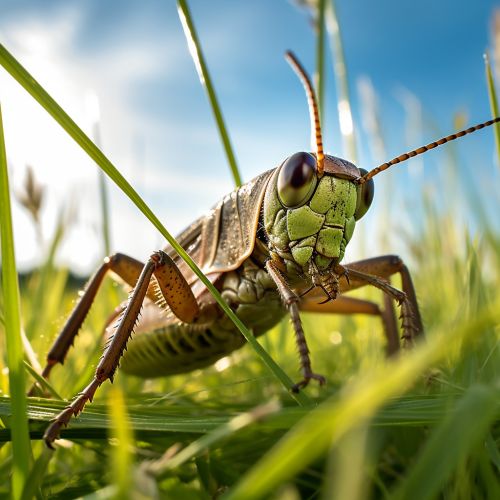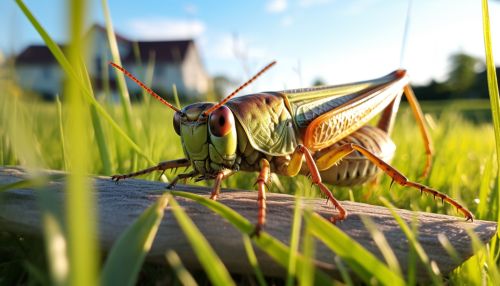Locust
Introduction
The Locust is a species of short-horned grasshoppers in the family Acrididae. Certain species of grasshoppers are known to change color and behavior at high population densities, becoming gregarious and migratory when they are normally solitary. These changes, or phase polymorphism, were used to define locusts.


Biology and Behavior
Locusts are insects that belong to the order Orthoptera. They are characterized by their ability to change their behavior and habits and can form swarms that can migrate over large distances. The transformation of the locust from the solitary to the gregarious phase is driven by several factors, including changes in population density and environmental conditions.
Phase Polymorphism
Phase polymorphism is a phenomenon that occurs in some locust species, where individuals undergo a transformation in response to changes in population density. This transformation involves changes in behavior, morphology, and physiology, and is a key characteristic that distinguishes locusts from other grasshoppers.
Swarm Formation
Locust swarms are formed when the population density of locusts increases to a certain threshold. This triggers a series of behavioral and physiological changes, leading to the formation of a cohesive group that moves together. The formation of locust swarms is a complex process that involves changes in individual behavior as well as interactions between individuals.
Impact on Agriculture
Locusts have been a major pest of agriculture for centuries. Their ability to form large swarms and migrate over long distances makes them a significant threat to food security in many parts of the world. Locust outbreaks can cause significant damage to crops, leading to food shortages and economic loss.
Control Measures
Controlling locust populations is a challenging task due to their ability to migrate over long distances and their capacity to rapidly increase in numbers. Various methods have been used to control locust populations, including chemical pesticides, biological control agents, and habitat management strategies.
